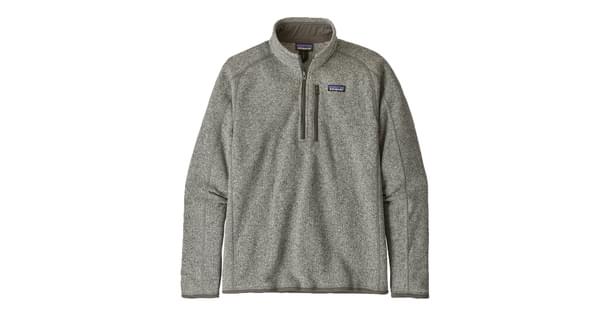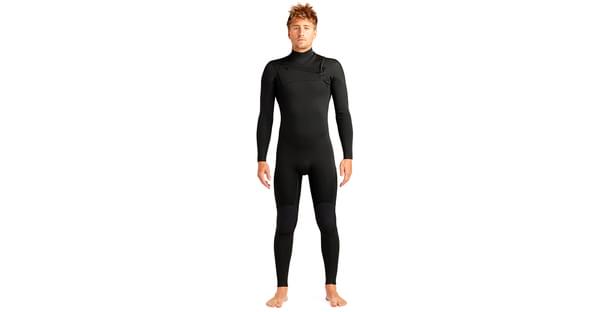- Home
- Gear & Reviews
- Backcountry Bed
Backcountry Bed
Backcountry Bed Description
The Backcountry Bed is a accessory brought to you by Sierra Designs. Read Backcountry Bed reviews or submit your own review to share with the paddling community. Check out a few other accessory recommendations below or explore all accessories to find the perfect one for you!
Sierra Designs
Backcountry Bed Reviews
Read reviews for the Backcountry Bed by Sierra Designs as submitted by your fellow paddlers. All of the reviews are created and written by paddlers like you, so be sure to submit your own review and be part of the community!
Summary: The Sierra Designs…
In my experiences, when paired with a NeoAir XLite Thermarest and using the integrated pad sleeve, the ensemble provided the warmest and most comfortable nights ever spent outdoors. I was also excessively pleased by the ease of getting in and out of the bag… I would go so far as to say that after being spoiled by the Backcountry Bed, I will never hassle with a zippered bag again. Take note, this bag is designed to be paired with a pad, due to a lack of insulation around the underside torso section…this may be a deterrent to the minimalists choosing forgo a pad.
Initial Impressions (what's included/materials/dimensions/loft/new features):
The Backcountry Bed comes in a nice mesh storage sack and includes a very lightweight (0.8 oz) stuff sack made of the same quality 20D polyester ripstop with a DWR finish as the bag. My sample weighed in at 2 lbs 10 oz (as verified by 3 different scales). In the provided stuff sack, the bag measures 16x9 inches but I managed to squish it down to 10x9 inches using a compression sack. I would say that pack-ability is similar to other down bags of a similar temp. rating (and of course, far better than synthetic bags).
According to the manufacturer, the bag fits a person up to 5'8" (and I am actually closer to 5'9" on a good day). Extended, the bag is around 72 inches long outside head to toe, and the comforter itself is about 46x46 inches. The bottom of the comforter is attached inside the bag while the other end is free, extending past the hood, with built in hand pockets. These aid in orienting/anchoring the comforter and in nesting cold hands. I found the oval opening to be generously large, in order to crawl in and out of.
Upon releasing the bag from its stuff sack, it quickly exhibits quiet impressive loft. It struck me that it looked just like the (what I assumed to be) staged pictures online. You know that gear that looks so perfect in the store or catalog only because of some doctoring and/or stuffing? Well this bag manages to shape itself on its own (especially the lower half), which immediately prompted me to break out a couple of my old bags for comparison. It seems sleeping bags have improved a whole lot since I bought my first backpacking bag over 12 years ago (which incidentally was also a Sierra Designs bag). Granted, both comparison bags have both lost a lot of their loft over 10+ years of use, but I'm quite certain they didn’t match up to this bag even in their prime. New baffle designs, contours, and outer materials make for a much nicer shape, look, and feel. The down itself has changed…it's now hydrophobic! Sierra Designs states that its DriDown achieves/maintains loft better than traditional goose down and resists the deleterious effects of water and humidity…more on that to follow.
Other features or lack-there-of…goodbye draw cords and zippers!:
I can't say enough about the design's simplicity and ease of entry/exit. The obligatory mention of zipper snag is blissfully unnecessary in this review. Instead, I could fill a few lines offering testimonial to the dangers of outdoor-equipment-zipper-overload and the enduring nightly struggle to navigate it all…perhaps in another tale. Let's just say that very limited brainpower is needed for a midnight bathroom excursion with this bag. Throw the comforter aside (with gusto if it's dawn), sit up, and pull your knees towards your chest while worming backwards just a tad and you're out!
The product descriptions are on track in claiming that the Backcountry Bed is as close to your bed at home as you can get. During entry, escape, tossing and turning, the pad sleeve keeps the ensemble perfectly aligned. What amazed me most was how the top comforter stayed in placed as I moved around. With the pad sleeve holding the bag in position and the hood drawn over the top of your head, the sides of the opening actually create a taught sleeve in which to tuck the comforter. As such, I was free to sleep on my stomach and rotate side-to side as much as I pleased, without the comforter coming un-tucked and letting the cold in. So in this way, the Backcountry Bed is even better than your comforter at home. But there are a few downsides to this design.
With the women's model, there wasn't quite enough room to fit a pillow AND my head inside the hood (recall, I'm at the uppermost limit of in terms of height for this bag). The pad sleeve also does not allow for a pillow to be placed under the hood, between the pad. So in effect, if it's so cold that you need to use the hood, your options in using a pillow are limited. I placed mine under the pad, thereby elevating my head enough so as to be happy. I also found that tucking the ends of the comforter under my head created just enough padding to qualify as a pillow and resulted in keeping the comforter in place even better.
Comfort:
So let's talk about the Backcountry Bed's key focus: sleeping position versatility and freedom! In a bed, I almost never sleep on my back or in any one position for very long…a style not so suited for the outdoors. When I traded up to the much thicker Neoair series of Thermarest, I was finally able to achieve my favored side and stomach positions but still kept getting 'lost' inside my mummy bags, as they failed to rotate properly with my antics. The Backcountry Bed does what it touts, which is stay in place while you roll around and assume just about any sleeping position you please. It is designed to be used with a pad…really it's compulsory because there is a large section on the back of the bag (essentially the area where the pad sleeve is sewn on) that has no
insulation. Keep in mind, such a strategy reduces the bulk and weight of the bag and is similar to several other bags on the market (Big Agnes). For me, such a design really worked with my sleeping habits and pairing of gear. I found the Backcountry Bed to be the perfect complement to my Xlite...almost as if they were made for each other. I would note that the pad sleeve is a pretty tight fit over the XLite (size regular) when it is fully inflated, which makes me wonder how more rectangular-shaped pads might fit. Keep in mind, my sample is a women’s size, so perhaps the regular or long sized bags might have a scaled-up pad sleeve. One trick I learned is to insert the pad first before fully inflating it. The sleeve has slots on either side so that the pad corners can protrude and inflation be adjusted. Together my pad and bag weighed approximately 3.5 lbs…that’s pretty impressive for such a comfortable and thermally efficient system.
Water-resistance and repellency:
My best test of the bag's hydrophobic properties came during a thru-hike of Big Cypress National Preserve. With 3/4ths of the 30 mile trail underwater, it's almost an understatement to say that this is one of the wettest environments in the US. And while we had clear skies for the 3 days, a cold front brought the temps down into the mid 30’s during the first night, resulting in copious amounts of dew. In fact, so much condensation formed on my tent that it pooled on the fly roof and started raining down on the interior around 2 AM. While I found that my tent didn't handle these extremes so well (the same tent that has been through downpours and days of drizzle without so much as a drip before), the bag DID perform to the manufacturer’s claims. I can say this with a lot of confidence because my unfortunate tent-mate happened to have a standard down bag, and the difference was quite clear. While her bag became saturated in all the places where it had contacted the tent wall and floor, the Backcountry Bed’s exterior nylon felt only damp to the touch. And despite water dripping directly on the bag for several hours overnight, I stayed warm and dry and could not find any wet spots/clumping in the morning. Loft was unaffected. We had an early start that day, so we had to pack all our equipment away before drying it out. I was again impressed that when I unpacked the bag at the next campsite, I could not detect any dampness whatsoever.
After this trip, I decided to really test the material’s water repelling abilities under artificial conditions. As such, I subjected the stuff sack to a stream of water from the sink, which it shucked off completely. I then turned the stuff sack inside out, dumped a few cups of water inside, and hung it in the shower. I forgot about my experiment until a full 24 hours later, when I returned to find half the water still inside. The outside material is thus pretty water resistant. So given all these findings, I would be confident in using this down bag under conditions that synthetic bags have traditionally been recommended for. Can you sleep outside unprotected in the rain and not get wet? No, not really, as the bag is not intended for that.
Warmth:
Finally, and perhaps most importantly but also most subjectively, I would say that the Backcountry Bed lived up to its temperature rating. Here’s the part where I must mention that I sleep cold. It goes deeper than that…despite growing up in Colorado and having spent months in Alaska and the Antarctic, I am a complete wuss when it comes to cold…that's why I live in Florida, hello? I’m thin and long…which is not a body plan for conserving heat. In my other 2 bags of similar rating, I have felt chilled at 30°F before, even when encased in several layers of clothing and a hat! Secondly, I must admit that I had to resort to sleeping in my parent’s unheated shed, in Colorado in the winter, to really test the lower temps with this bag. So wind and humidity were negligible under this setting (similar to a hut or yurt). But I can say that during that week, I was incredibly warm in the Backcountry Bed at or just below freezing. On the 2 nights that it dipped into low 20's inside the shed (single digits outside), I did develop a cold spot in the foot box. To me this is not all that surprising, given that I have poor circulation to my feet, which tend to always be cold. I adjusted by using thicker socks the second night, which helped. I actually expected to find cold spots around the edges of the comforter but my torso proved to consistently be the warmest part in the bag.
Given all this, I feel that the Backcountry Bed fares just as well as traditional mummy-style bags in terms of conserving body heat, and that is to say that the minimum temperature rating is really the temperature that you’ll survive the night, and not necessarily be comfortable. I would add that perhaps the women’s model could come with a bit more fill around the feet, given that this seems to be a common cold spot for many women. Also, from the knees down, there aren’t as many options as with a 2-way zippered bag, which you can unzip from the foot end for ventilation. In fairly warm temperatures (60's), I improvised by pulling one or both legs out and just lying on top the bag, with the comforter spread lengthwise to cover much of my body. In this way, the design does offer good versatility in dealing with a wide range of temperatures. Note that newer versions include a footbox sleeve on the underside of the bag, by which one can stick their feet out to vent (see comments below).
Summary:
I felt that a full 10 star rating was very justified for this piece of gear. It is one of the few pieces of gear I would feel confident in paying full retail price for and consider it in belonging to my core collection. I have since also bought the 2-season Backcountry bed, which is more suitable to most of my Florida expeditions.
Testing Notes:
This bag was used in late October – January in Florida and Colorado. It was tested in both dry and humid conditions in temperatures ranging from 21-65°F.
Recommended uses:
living it up in comfort in the backcountry, in huts, hostels, or wherever travels may take you. This is an all-around design suited for many uses.
UPDATE:
I found another circumstance in which the Backcountry Bed excels: bivouacing. I decided to try the bed with my OR Aurora Bivy sack for an overnight trip last weekend. My frustrations with using the sack previously stemmed from trying to wrestle with a zippered mummy bag inside the narrow tube of a bivy sack...it's kind of the square peg in a round hole scenario. Now I found a round peg...in the same effort/motions that it takes to enter the bivy, you're tucked into the Backcountry Bed too.
As is the norm for a Florida setting, I also contended with a lot of condensation, in and outside the bivy sack...all in direct contact with the bed. I'm pretty sure I sweated a good amount too but the bed stayed dry and warm on the inside, not clammy in the least.
The outside nylon of the bed was quite damp in the morning, to be expected. It all got stuffed in this condition, still inside the damp bivy, for the hike out (note the shiny area on top of the bivy in the pics...that's all the dew reflecting the flash). When unpacked later that night, the outer nylon was still damp but the loft appeared unaffected and there was no clumping.
Finally, I feel a lot more comfortable in using my bivy.
About me and my uses for a sleeping bag:
I live in Miami, FL where I do a lot of kayak and backpacking trips in and around the Everglades and Big Cypress forests, where it’s sometimes buggy, wet, and even cold, but always flat and humid! I like to shake things up every so often by trekking the high and dry Colorado mountains where I grew up…quite a contrast. My travels and work aboard research ships have taken me all over the world, as far as Antarctica, Alaska, New Zealand and a bunch of little islands in between. I started backpacking earnestly about 13 years ago in order to better experience Volcanoes National Park Hawaii…the best way to see some lava! A good, versatile sleeping bag has been necessary for most of my endeavors, from huts to hostels, bunks to the beach. I tend to sleep cold, am not comfortable sleeping on my back, and toss around a lot. I'm 5'9" and 130 lbs.




